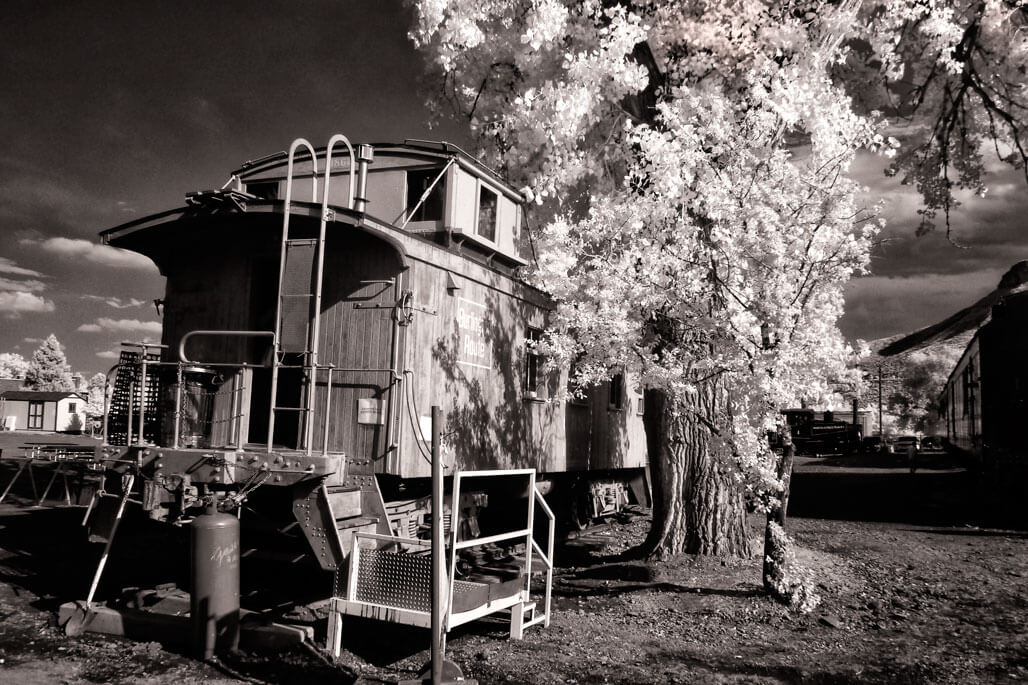Try Infrared Photography This Summer
Today’s Post by Joe Farace
Since I got my Panasonic Lumix G5 converted to infrared capture last year, I started feeling the same kind of euphoria that everyone who has their first IR experience feels—even though I’s been experimenting with IR capture since the 1970’s with Kodak’s infrared film. You run around taking pictures of everything and stuff that looks mundane in color or even black & white looks so different. Mary called it “dreamy” when looking at images that Mark Toal and I made at the Colorado Railroad Museum in Golden, Colorado. My favorite image (above) was one recalling the look of the HBO series Carnivale.
Infrared black-and-white photographs render landscapes as if they were glowing and moonlit. Because exposure meters are not sensitive to infrared light, it’s difficult to calculate exact exposures but that doesn’t mean you shouldn’t try.

Subjects that appear equally bright in normal light might reflect infrared radiation at different rates and have different brightness. My IR converted Panasonic Lumix G5, for example, that was used to make the above photograph tends to slightly underexpose even though the LCD image looks perfect. That’s why when getting started in IR photography it’s a good idea to bracket different exposures because you can’t always count on your LCD screen giving you the kind of result you’ll see when viewing the files on a calibrated monitor.
Some cameras offer a built-in bracketing function but even if your camera doesn’t have a bracket function it should have an Exposure Compensation feature that will let you adjust exposures on one-half or one-third (my preference) stops while in the various automatic exposure modes.
Tip: Most cameras offer a manual mode and you don’t need a hand held exposure meter to get started using manual mode. Typically I look through the lens and see what the suggested exposure is in Program mode, then transfer that shutter speed and aperture to the camera after setting in manual mode. Now you’re free to change shutter speed or aperture to bracket teh IR exposures.
Tip: If you want to save time and maybe a few bucks when having your camera converted to infrared, please use the coupon code “farace”
when ordering a conversion from
LifePixel
.

My book The Complete Guide to Digital Infrared Photography is currently out of print but you can get an affordable used copy or not-so-affordable new copies of the book from Amazon.com.




